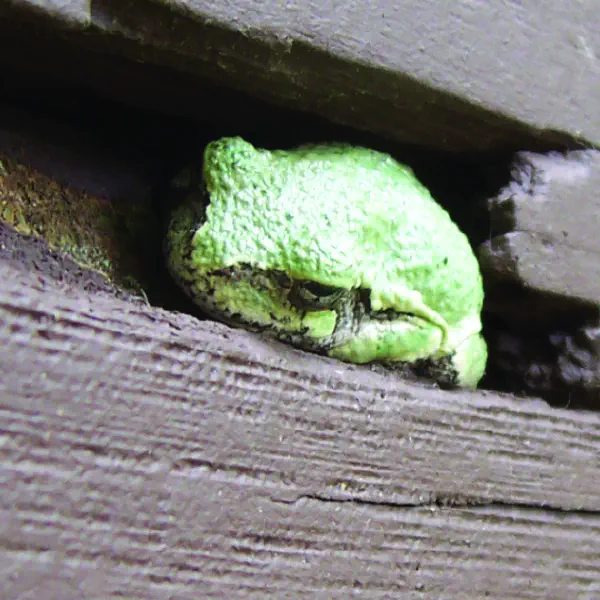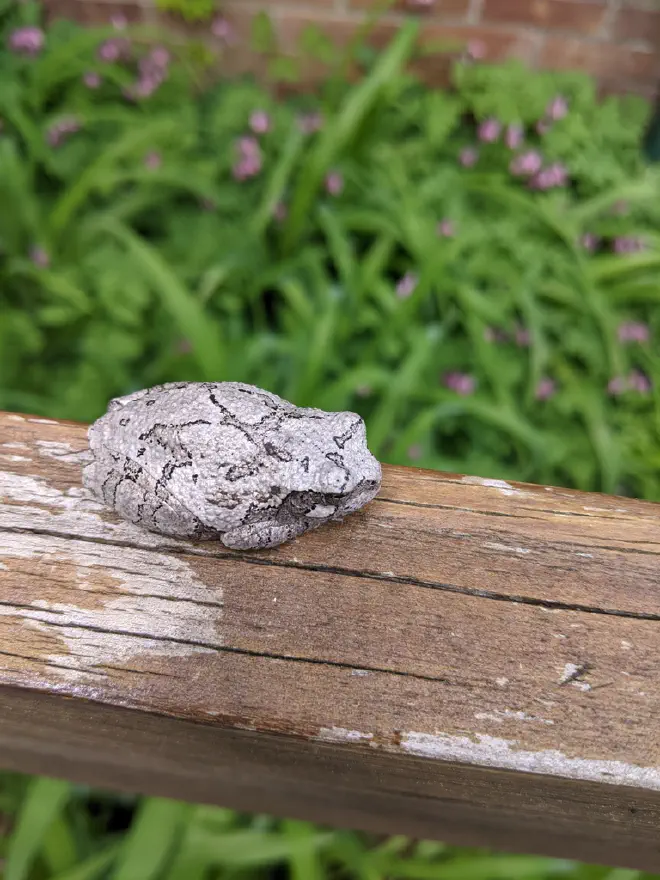Dryophytes versicolor
Table of Contents

Scientific Classification
| Kingdom: Animalia |
| Phylum: Chordata |
| Class: Amphibia |
| Order: Anura |
| Family: Hylidae |
| Genus: Dryophytes |
| Species: Dryophytes versicolor |
Conservation Status
Identifying Features
Gray treefrogs are usually green-brown to gray colored, with dark spots on the back, bright yellow-orange markings under their thighs, and white markings below their eyes. They have rough skin and large toe pads.
Habitat & Range
Gray treefrogs live in trees or shrubs near the water and can be found in most of the eastern half of US and Canada.
Behavior
Gray treefrogs are nocturnal and spend most the day resting in trees and shrubs. Due to their superior camouflage, they blend well with the environment and can be difficult to spot. At night, they crawl along the branches and leaves in search for food. Only during the winter and in breeding season do they come out of trees and bushes in search of new locations.
Life Cycle
Gray treefrogs begin breeding season in late spring and early summer after the frogs wake up from hibernation. Females lay thousands of eggs in pools of water that hatch into tadpoles after several days. The tadpoles will remain in this stage for 4-8 weeks before they transition into young gray treefrogs. The young frogs do not reach adulthood until after 2 years old.
Featured image by James Dake


